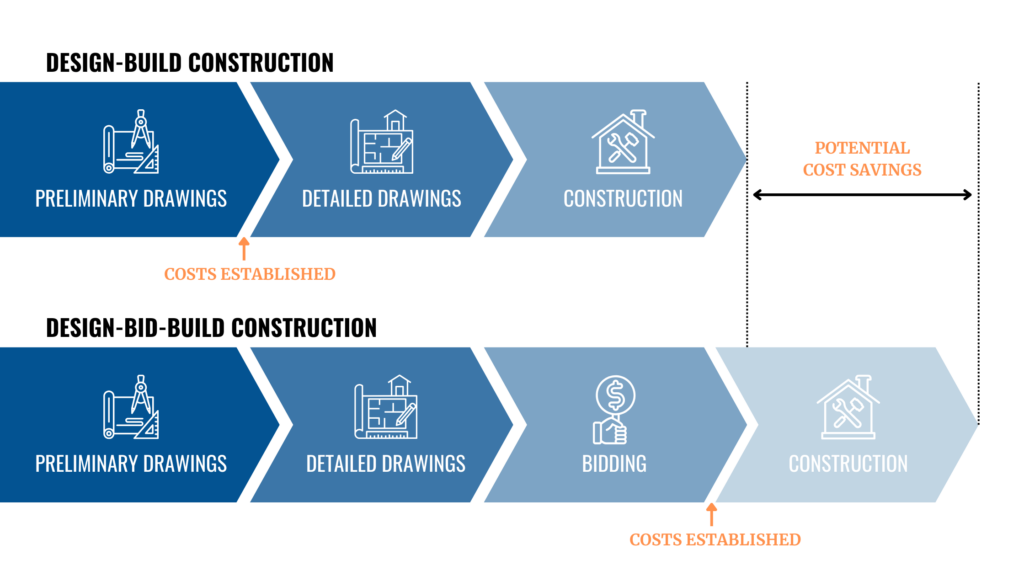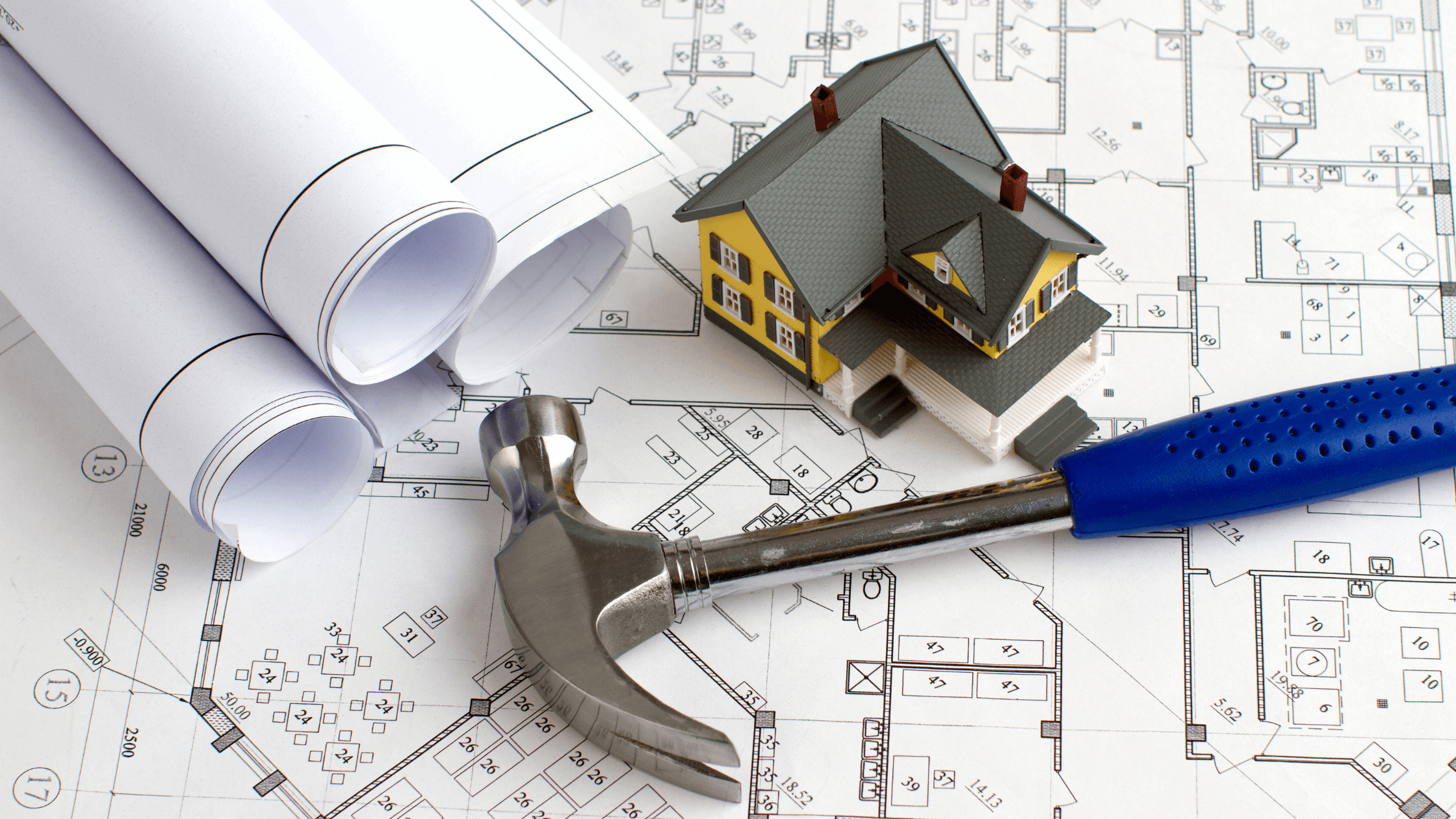The building industry has many moving parts. From planning and design to breaking ground and building, the process is filled with steps, setbacks, and deadlines. Design-build construction streamlines these processes by involving only a single contract and removing the bidding stage. This helps to save costs, reduce construction times, and minimize stress.
What is design-build construction?
Design-build construction is a delivery method involving a single contract between the builder and the property owner. Typically, there are two separate entities: a contractor and a designer. Design-build combines these entities, making a singular company responsible for executing both areas of the project. The aptly named construction method removes the bidding stage in construction.
According to the Design-Build Utilization report, the design-build method has become increasingly popular. Since the report’s publication in 2018, about 58% of owners have planned to use it, and the number has steadily risen. This method is now more widely permitted for public agency projects in 43 states, including Washington, Virginia, and New York. It has been used more often globally because it aims to remove the complexity of multiple contracts from the construction industry.
What’s the difference between design-build and traditional construction?
Traditional construction project delivery is marred by a gap between designers and builders. This method, also known as design-bid-build, requires both entities to draw separate agreements with the owner.
When designers and builders are siloed, the owner has to take charge and manage each organization, its details, and its timelines. When problems occur, it’s normal for one side to blame the other. For an owner, this can cause conflict, setbacks, and budget concerns, as project compromises must be made.
With design-build construction, everyone works together toward the same timeline and goal. This fosters a more collaborative approach to project delivery and makes the process more streamlined for the owner. The cost benefits of design-build also make it a more enticing choice for modern construction. It’s more peace of mind and financial control for everyone.
What are the advantages of design-build?

When you opt for design-build, the advantages stack quickly.
- Smoother process: Both design and building under one company eliminate conflicts or project blame-game.
- Faster execution: Design-build methods eliminate the bidding phase, allowing design and building to progress concurrently.
- Cost savings: The actual builders are a part of the design phase, and there’s a more prudent use of materials and timely completion. It’s generally more efficient as they have more skin in the game.
- Increased accuracy: Timelines, budget, and results are more accurate. There are fewer setbacks and fewer last-minute surprises when two entities act under one.
- Improved collaboration: Because both construction aspects collaborate under a single team, changes, pivots, and bumps in the road are addressed quickly.
Things to consider
While design-build has several advantages, there are also a few things to consider.
- No bid could mean a worse price: Competitive pricing is lost when there is no bidding process for the project.
- Less contract flexibility: Services are more set in stone when they come from one entity versus two.
- Less credibility: The project timeline happens much quicker with design-build. This might decrease the likelihood of innovation, creativity, and quality.
Efficiency, collaboration, cost savings, and smoother processes make design-build more likely to become a common practice in the future. However, it has its drawbacks. If you’re a project owner looking to streamline the construction process and save money without compromising build quality, consider design-build.
Subscribe to the newsletter for more on construction, renovation, and home design.


